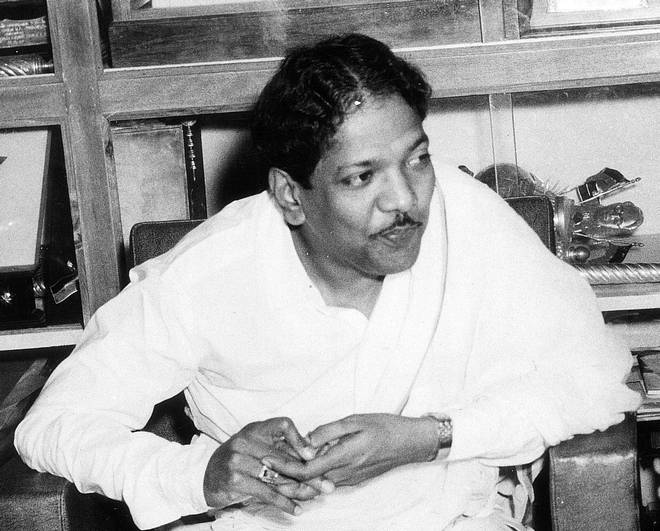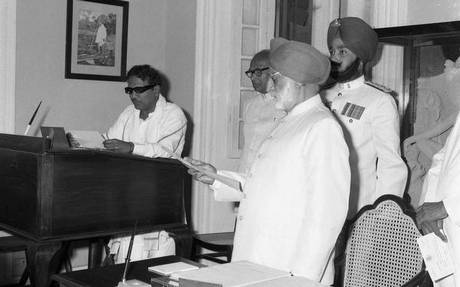Monthly Archives: August 2018
15
14
13
12
11
10th
09
08
Obituary: M. Karunanidhi, Dravidian stalwart

Karunanidhi was a strong advocate of the rights of the State governments, State autonomy and federalism, and he secured the right for Chief Ministers to hoist the national flag on Independence Day.
M. Karunanidhi, five-time Tamil Nadu Chief Minister and DMK president for nearly 50 years, died at 6.10 p.m. on Tuesday after battling illness for 11 days at the Kauvery Hospital in Chennai. Affectionately called Kalaignar (artiste and man of letters) by followers, he was 94.
“Despite the best possible efforts by our team of our doctors and nurses to resuscitate him, he failed to respond,” Aravindan Selvaraj, executive director of the Kauvery Hospital, said in a press release.
The stalwart of the Dravidian movement is survived by wives Dayalu Ammal and Rajathi Ammal; children M.K. Muthu (born to his first wife Padmavathy); M.K. Alagiri, M.K. Stalin, M.K. Tamilarasu and daughter Selvi (through Ms Dayalu); and M. Kanimozhi, born to Ms. Rajathi.
The DMK patriarch, who outlived all his contemporaries in the Dravidian movement, except general secretary K. Anbazhagan, was rushed to the hospital from his Gopalapuram house in the early hours of July 28 after a drop in his blood pressure.
His health had begun to deteriorate on Monday evening with doctors acknowledging that maintaining his vital functions remained a challenge considering his age related ailments and setting a 24-hour deadline for determining the prognosis. At 4.30 p.m. on Tuesday, doctors announced that his condition was “extremely critical and unstable”.
On Tuesday afternoon, Mr. Stalin, Mr. Alagiri and Ms Kanimozhi, along with senior party leaders T.R. Baalu, I Periyasamy, E.V. Velu and Pondmudy, had a 20-minute meeting with Chief Minister Edappadi K Palaniswami at his official residence on Greenways Road, ostensibly to inform him of Karunanidhi’s declining health and seek permission to bury him on the Marina by the side of his political mentor and DMK founder C N Annadurai. They returned to the Kauvery Hospital thereafter.
Soon after this meeting, Chief Secretary Girija Vaidyananthan and some officials of the Public Works Department and Director General of Police T K Rajendran were closeted in a meeting with the Chief Minister.
Karunanidhi, who was largely confined to his home since December 2016, was on July 18 taken to the Kauvery Hospital to change his tracheostomy tube and he returned home the same day. Thereafter, he developed fever and infection and was treated round-the-clock by a team of doctors and nursing professionals in hospital-like environment on the first floor of his home.
Man of records
Karunanidhi was the only Chief Minister in the State whose government was dismissed twice — first during the Emergency in 1976 and again in 1991— by invoking Article 356 of the Indian Constitution. He also created a record by winning all the 13 Assembly elections he had contested since 1957. In 1984 he chose to enter the Legislative Council (since abolished).
A strong advocate of the rights of the State governments, State autonomy and federalism, he secured the right for Chief Ministers to hoist the national flag on Independence Day. It was he who created a separate invocation song for the State — Tamil Thai Vaazthu — by adopting Manonmaniam Sundaranar’s poem Neerarum Kadalodutha.
In pictures: M. Karunanidhi, the five-term Chief Minister

“During the Emergency when there were fears that regional parties could be banned and even leaders like V.R. Nedunchezhian suggested that the DMK should drop the word Dravida from its name, he stood his ground,” said K. Thirunavukkarasu, historian of the Dravidian Movement and author of the three volume history of the DMK.
Born in Tirukkuvalai, a small hamlet 40 km away from Tiruvarur in the then composite Thanjavur district into a family of musicians — his father Muthuvelar was a nagaswaram player — Karunanidhi was also sent to learn the instrument. But the rebel in him turned his back on music, as nagaswaram players in those days were not allowed to wear shirt or wear the angavastram.
He even once threatened to jump into Kamalayam, the temple tank of Thiyagarajaswami in Tiruvarur, when the headmaster refused him admission. His political career began when he organised students against imposition of Hindi in 1938. He was just 14 then.
Formative tears
Even though his formative years belonged to a period when the Communist movement dominated east Thanjavur, Karunanidhi, with a passion for Tamil language and social justice, gravitated towards the ideas of the Justice Party, Periyar E.V. Ramasamy and C.N.Annadurai. He had a meteoric rise, first in the Dravidar Kazhagam and subsequently in the DMK and he always proved that he has the skill and calibre to run the party after the demise of Annadurai. He was the first president of the DMK, a post created after Annadurai’s time, and Nedunchezhian who was also in the race for the Chief Minister post, became the general secretary.
His rise in the party and government as Chief Minister put an end to the team of leaders who wielded power and enjoyed clout almost on a par with Annadurai. He gained control over the party gradually and at one point the DMK became synonymous with Karunanidhi.
As a minister and later as Chief Minister, Karunanidhi heralded sweeping and bold reforms. As a transport minister in Annadurai’s government, he nationalised the bus service and the DMK government headed by him introduced land reforms. Later, Communist leader Manali Kandasami would say Karunanidhi was able to achieve land reforms with a drop of ink–signature–what Communists struggled to achieve through blood.
A writer, orator and journalist, who founded the DMK’s official organ Murasoli, Karunanidhi’s end has come nearly a year after the platinum jubilee of the newspaper was celebrated. During the Emergency he braved the censors and at times hoodwinked them while bringing out the Murasoli. As he could not publish the names of those who had been arrested under the Maintenance of Internal Security Act (MISA), he just published the list of those who could not pay their respects to Annadurai, the founder of the DMK and the party men got the message.
As a dialogue and screenplay writer, he worked for 77 films. Karunanidhi penned the dialogues for films that propelled three actors of Tamil cinema into heroes. Rajakumari, the first film he worked as a dialogue writer was also the film MGR was first introduced as a hero. Parasakathi, for which he wrote the dialogues announced the arrival of Sivaji Ganesan, another formidable talent. S.S.Rajendran was introduced as a hero in the film Ammaiappan for which Karunanidhi was the script writer.
For supremacy of Tamil
In his career as a politician and Chief Minister, Karunanidhi constantly sought to entrench the idea of the supremacy of Tamil. The creation of Valluvar Kottam in Chennai, Chilapathikaram Exhibition at Poompuhar and 133 feet statue of Tiruvalluvar near Vivekananda Rock Memorial in Kanniyakumari are his efforts to relive the glory of the past. He wrote commentary for Tholkappiyam,the ancient Tamil grammar and many Sangam literary works. His dialogues for the film Poompuhar, based on Silapathikaram, the Tamil epic, are also a masterpiece.
Even when out of power for 13 years during the reign of MGR and President’s rule, he was able to draw the limelight through his constant political activities, writings and public speeches. He released the report of Justice Paul Commission that probed the death of Subramania Pillai, the official of the Tiruchendur Murugan temples and gave a troubled time for MGR and his cabinet colleagues.
The DMK government headed by him contributed enormously to the development of infrastructure in the state and most of the flyovers aimed at easing traffic congestion were the brainchild of his government. His commitment to social justice led to the creation of Periyar Memorial Samathuvapurams, egalitarian self-sustained housing colonies where families belonging to various communities were allotted houses, though it was seen as a tokenism.
source: http://www.thehindu.com / The Hindu / Home> News> States> Tamil Nadu / by K. Kolappan / Chennai – August 07th, 2018